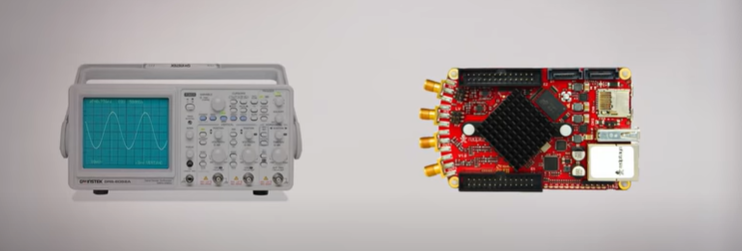What is an oscilloscope?
-
Posted by
 Red Pitaya Team
, October 7, 2020
Red Pitaya Team
, October 7, 2020
-1.jpg)
Electrical signals are everywhere – from our smartphones to our hearts, we live in a world in which being able to measure such signals can tell us a lot about how things work. To measure these signals, which come in various shapes, waveforms and sizes, we use an oscilloscope.
An oscilloscope is a device for the observation and measurement of electrical signals, enabling us to extract all the information these signals carry. For example, the voltage level of your battery can tell you how much time you have left on TikTok, and the shape of your heartbeat signal has information about the health state of your heart.
To measure the voltage of a device we simply connect the oscilloscope probes parallel to it so a small amount of electrically charged particles flows through the positive wire to the oscilloscope input. On the oscilloscope input there is an analogue to digital converter which samples the voltage level of the signal in constant time steps. The shorter the time steps are, the higher the sampling frequency of the oscilloscope. The sampling frequency of an oscilloscope determines the speed of the signals we can measure with it.
The data of voltage over time is displayed on the screen, with time on the X-axis and voltage on the Y-axis. We can also adjust the oscilloscope to show repetitive signals as a persistent waveform on the screen. We can then analyze various properties of the waveform, like amplitude, frequency, rise time, time interval, and distortion, among others.
How is Red Pitaya different from typical oscilloscopes?
Most oscilloscopes look very different to a Red Pitaya.
Click HERE to watch a video introduction of our oscilloscopes.
About the Red Pitaya Team
The Red Pitaya editorial team consists of engineers, researchers, and product experts who develop and test cutting-edge open-source test & measurement solutions.
Our mission is to make advanced instrumentation accessible to everyone — from students and educators to leading research labs worldwide.




